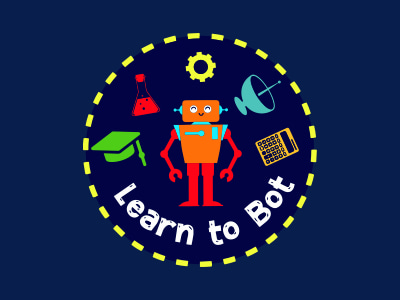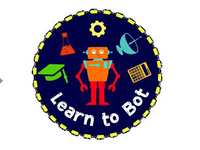- Categories :
- More
What Are the Most Critical STEM Skills My Child Needs to Succeed in the U.S. Job Market by 2035?

“AI is changing everything — including what your child needs to learn today to thrive tomorrow.”
In the past, preparing children for the future meant teaching them specific technical skills like how to code in a particular language or memorize science facts. But as artificial intelligence evolves at lightning speed, that advice is no longer enough — or even accurate.
So, what should your child learn to succeed in a future shaped by AI?
This guide breaks it down.
Why Traditional Skills Are No Longer Enough
AI isn’t just a new tool — it’s reshaping the rules of the game. As OpenAI’s Sam Altman put it, “AI can already write 50% of the code in some companies.” That means what matters isn’t who can type the fastest Python script — it’s who can think critically, solve problems, and use AI effectively.
Top tech executives now say:
- Google’s AI writes 25% of their code (Sundar Pichai).
- Anthropic predicts AI will write 90–100% of code by 2025.
- Perplexity’s CEO believes “clarity of thought and problem solving” will matter most — not code writing.
The hard truth? No one can predict the exact skills your child will need. But we do know what foundational abilities will prepare them for almost any future.
The Most Critical STEM Skills for 2035
1. Learning STEM Fundamentals Still Matters — A Lot
Don’t focus on the “latest trend.” Focus on what lasts.
Children need a strong foundation in:
- Math (algebra, geometry, statistics)
- Physics and Science (understanding how things work)
- Coding concepts (variables, loops, conditionals — not just syntax)
> “If you understand logic and problem solving, you can pick up any language or tool,” says CodeEasy’s CEO.
Rather than just teaching Python or Scratch, focus on what’s under the hood — the thinking behind the code.
2. Problem Solving > Memorization
AI can now do basic calculations, answer science questions, and generate code snippets. But it can’t understand a messy problem, decide what to do, and troubleshoot the process. Your child can.
To build problem-solving skills:
- Give them real-world challenges (e.g. build a robot that avoids obstacles)
- Let them fix broken code or combine multiple scripts
- Encourage logic puzzles and hands-on science kits
Tip: Platforms like [LearnToBot](https://www.learntobot.com/summerwoodlands) already do this by giving kids challenges, not worksheets.
3. AI Fluency Is the New Literacy
Just like reading and writing, kids will need to understand how AI works — not necessarily at the level of an engineer, but enough to use it wisely.
Here's how to get started:
- Explain AI through games and activities (Use a simple AI analogy like: “AI is like a robot that learns from lots of examples.”)
- Use AI tools (e.g., image generators or story builders) under supervision
- Discuss the ethics of AI (e.g., "Should a robot grade your homework?")
Keywords like AI learning for children and how AI works for kids are becoming more popular — and for good reason.
4. Computational Thinking = Mental Superpower
Computational thinking is about breaking down problems, recognizing patterns, designing step-by-step solutions — and it applies far beyond coding.
Kids use computational thinking when:
- Sorting LEGO bricks by size and color
- Planning how to win a board game
- Organizing data from a science experiment
STEM and AI tools like Scratch, Arduino, and Python are perfect to teach this naturally — while being fun.
5. Creativity, Curiosity, and Adaptability
Ironically, the most “human” skills may be the most valuable in an AI world:
- Creative thinking: Inventing new uses for AI or building something entirely new
- Curiosity: Asking “why” and “what if”
- Adaptability: Learning new tools quickly
World Economic Forum data shows that these are top rising skills — more than memorizing technical know-how.
> “The future belongs to kids who can learn, unlearn, and relearn,” says a report by McKinsey.
What This Means for Parents Today
If your child is between 6 and 14 years old, you’re in the perfect window to shape how they think — not just what they memorize.
Here’s how to start:
- Focus on projects over worksheets
- Encourage team-based activities (soft skills matter!)
- Help them ask better questions, not just give the right answer
- Let them experiment, fail, and fix
Think less like a tutor, and more like a coach building mental flexibility.
How LearnToBot Prepares Kids for the Future
At LearnToBot, we don’t just teach kids to follow instructions — we help them become creators.
Here’s how we bring these future-ready STEM skills to life:
Real Coding, Real Robots
Kids build and code their own robotic projects using Arduino, sensors, and real electronics — not just screen simulations.
Problem Solving from Day 1
Every project starts with a challenge. “Can you make your robot detect an obstacle?” “Can you fix a code that isn’t working?” This is how artificial intelligence for students becomes real.
AI-Ready Thinking
Even our younger students (ages 7–10) are taught concepts like:
- Pattern recognition
- Decision trees
- Cause-effect logic
These are the foundations of AI explained for children — preparing them to work with intelligent tools.
Local, Small-Group, Hands-On
Classes are held in Katy, TX — just a short drive from The Woodlands, Spring, Tomball, Magnolia, Conroe, and Klein.
With small class sizes and 1:5 instructor ratio, every child gets personalized attention and builds at their own pace.
> “My son came home explaining how sensors work and debugging code — and he’s only 9!” – Parent Testimonial










